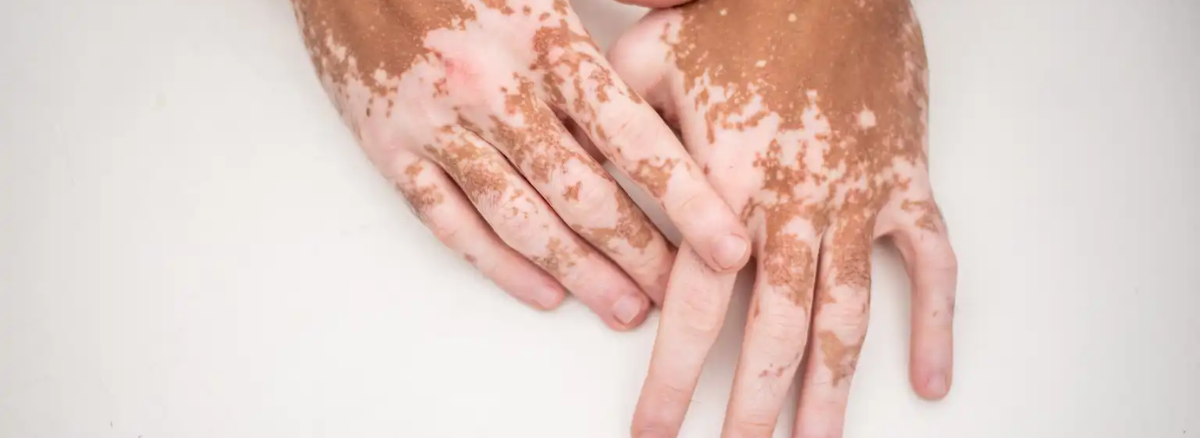Vitiligo or leucoderma (in a common man’s language) is a common and chronic skin condition, it manifests as depigmented patches on any part of the body after the loss of pigment. I do not consider vitiligo as a skin disease, rather I think it’s just as a condition, just as someone is fair or has a darker complexion.
Vitiligo does not harm any part or any organ or system of the human body, it just has an emotional impact on the individual and the family because of social discrimination. The treatment of Vitiligo is sought more because of the social stigma. The reason behind this emotional stress is an age-old stigma.
Also Read: Body Acne: Causes, Types, Prevention & Treatment
The white patch of leucoderma was confused with another disease that’s leprosy, which was an infectious disease and used to spread by contact from one person to another person. In ancient times, a person with leprosy would have to leave his village and be shifted to a sanatorium which was away from the human population. Families would try to hide their members who developed a white patch, fearing social boycott and the fear of being shifted to the sanatorium.
Surprisingly at present, there is no stigma attached to leprosy, people no more try to hide the diagnosis but rather take treatment for it. But the stigma of vitiligo persists. I have seen people being so stressed about it that it interferes with their daily and personal lives. They are ready to take any treatment, especially the indigenous medicines which have no science behind them. They do not worry or enquire about the long-term side effects of the medicine. It is essential to be better informed and educated about vitiligo, for better understanding and management.
Causes of Vitiligo
What is vitiligo caused by? Here are a few factors that can be considered as the causes of vitiligo:
1. Loss of Melanin
Vitiligo manifests when there is a loss of melanin, which is the pigment responsible for the skin color. This could be due to the loss of melanin-producing cells known as melanocytes. The exact cause behind this is not known, it is proposed to be genetic, environmental, and autoimmune.
2. Autoimmune disorders
Many other autoimmune disorders such as diabetes and thyroid dysfunction are associated with vitiligo.
3. Genetic Predisposition
Is vitiligo a genetic disease? There’s always a genetic predisposition for vitiligo. If a detailed family history is taken, there would be a positive family history of an autoimmune disorder like diabetes, thyroid, or even vitiligo in one of the blood relations.
4. Stress
Stress (as is seen in all the health issues) is a major contributor to the spread of leucoderma, other aggravating factors could be sun damage and nutritional deficiencies.
Treatment of Vitiligo
The recent advances in science have led to many new treatments of Vitiligo options for managing vitiligo. Many new drugs have now come up. Visit your dermatologist for the best treatment option for your problem. Most dermatologists will have a step-by-step approach. A few tests may be advised by the doctor to find any treatable cause like nutritional deficiencies and to rule out other autoimmune disorders. Regular treatment with follow-ups is essential for management.
You should be an informed patient, and clear all your doubts and questions with your doctor. Don’t rely on Google or your friends and family for your doubts and questions, your dermatologist is a better person to guide you with the best option for your treatment.
Name: Dr. Jastinder Gill
Address: House no. 3, 3, I – Block, Sarabha Nagar, Ludhiana, Punjab 141001
Phone: 9815473775

